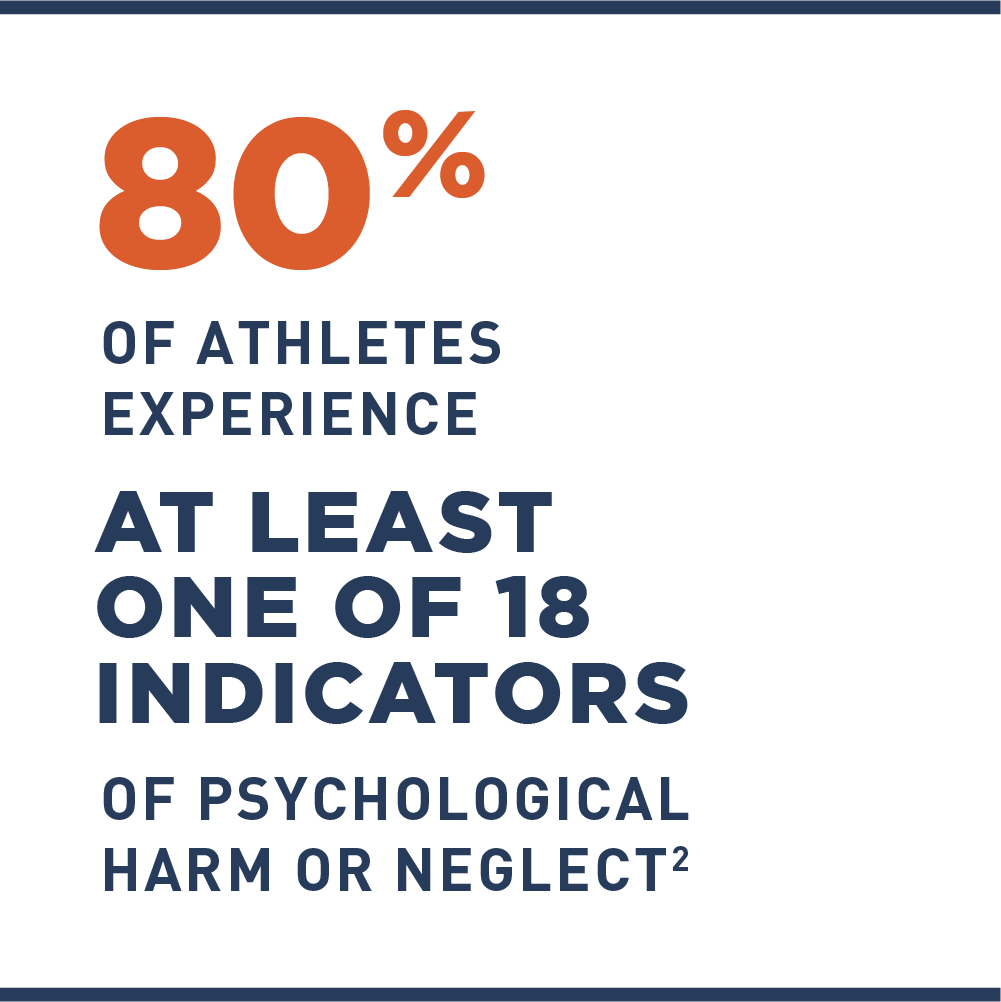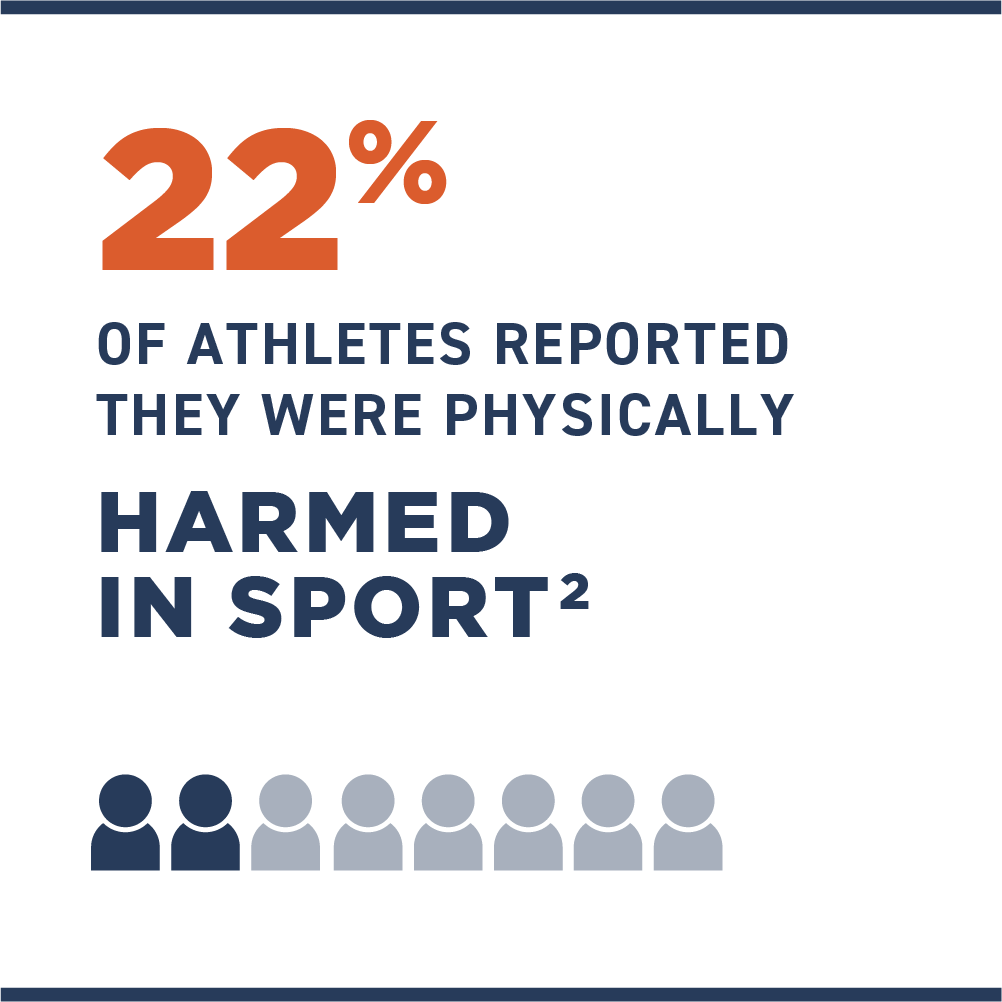
Preview Now
Emotional and Physical Abuse
and Misconduct Toolkit
Scroll down to preview toolkit resources and information
The U.S. Center for SafeSport is creating an Emotional and Physical Abuse and Misconduct Toolkit available in the coming weeks—for coaches, volunteers, and others who work directly with young athletes—to help individuals who participate in sport recognize, prevent, and respond to five major types of abuse and misconduct:
- Emotional Misconduct
- Physical Misconduct
- Harassment
- Bulling
- Hazing

Explore These Themes
This toolkit will help you recognize, prevent, and respond to emotional and physical abuse and misconduct in your sport activities and environments, and it includes three primary sections:
Recognize
The Recognize section introduces five major types of emotional and physical abuse and misconduct. You will learn how to identify them in your sport settings, and how to recognize when common behaviors escalate into misconduct.
Prevent
The Prevent section outlines preventing emotional and physical abuse and misconduct in your sport. You will learn about trauma-sensitive coaching, creating positive team environments, and stopping problematic behaviors from becoming abuse and misconduct.
RESPOND
As much as we wish to, we cannot prevent all instances of abuse and misconduct. The Respond section guides you on responding to athletes who disclose abuse or misconduct to you, recognizing and addressing retaliation, and appropriately reporting abuse and misconduct.
Toolkit Resources
The Emotional and Physical Abuse and Misconduct Toolkit will include numerous handouts and activities you can use with your stakeholders. Now, you can download several Toolkit resources to preview Toolkit guidance and put key principles in play today.
Why We're Doing This
But for every form of abuse and misconduct, we can choose counteracting healthy behaviors that build athletes up rather than tear them down—fostering positive and successful experiences, free of abuse, for young athletes everywhere.
You play a key role in shaping sport environments in which all athletes feel safe, supported, and strengthened. By modeling and teaching appropriate behaviors and boundaries, and by sharing the importance of abuse-prevention principles far and wide, you can reduce the possibility of abuse and misconduct in your sport settings.



1 U.S. Department of Health and Human Services. (2019). National Youth Sports Strategy. Washington, D.C.: U.S. Department of Health and Human Services. Accessed from: health.gov/sites/default/files/2019-10/National_Youth_Sports_Strategy.pdf
2 U.S. Center for SafeSport, Institute to Promote Athlete Health and Wellness, University of North Carolina Greensboro. (2021) Athlete Culture & Climate Survey.
3 Gilchrist, M. & Mallett, C. J. (2017). The theory (SDT) behind effective coaching. In R. Thelwell, C. Harwood, & I. Greenlees (Eds.). The Psychology of Sports Coaching: Research and Practice (pp. 38-53). New York, N.Y.: Routledge.
Join our Mailing List
Learn more about trainings and resources that can help you apply abuse prevention practices and policies in your sport setting.

The U.S. Center for SafeSport is an independent nonprofit organization responsible for responding to and preventing emotional, physical, and sexual misconduct and abuse in the U.S. Olympic and Paralympic Movement.
This site was supported in part by grant number 2018-KY-B8-0001, awarded by the SMART Office, Office of Justice Programs, U.S. Department of Justice. The opinions, findings, and conclusions or recommendations expressed in this product are those of the contributors and do not necessarily represent the official position or policies of the U.S. Department of Justice.
© Copyright 2022 U.S. Center for Safesport



